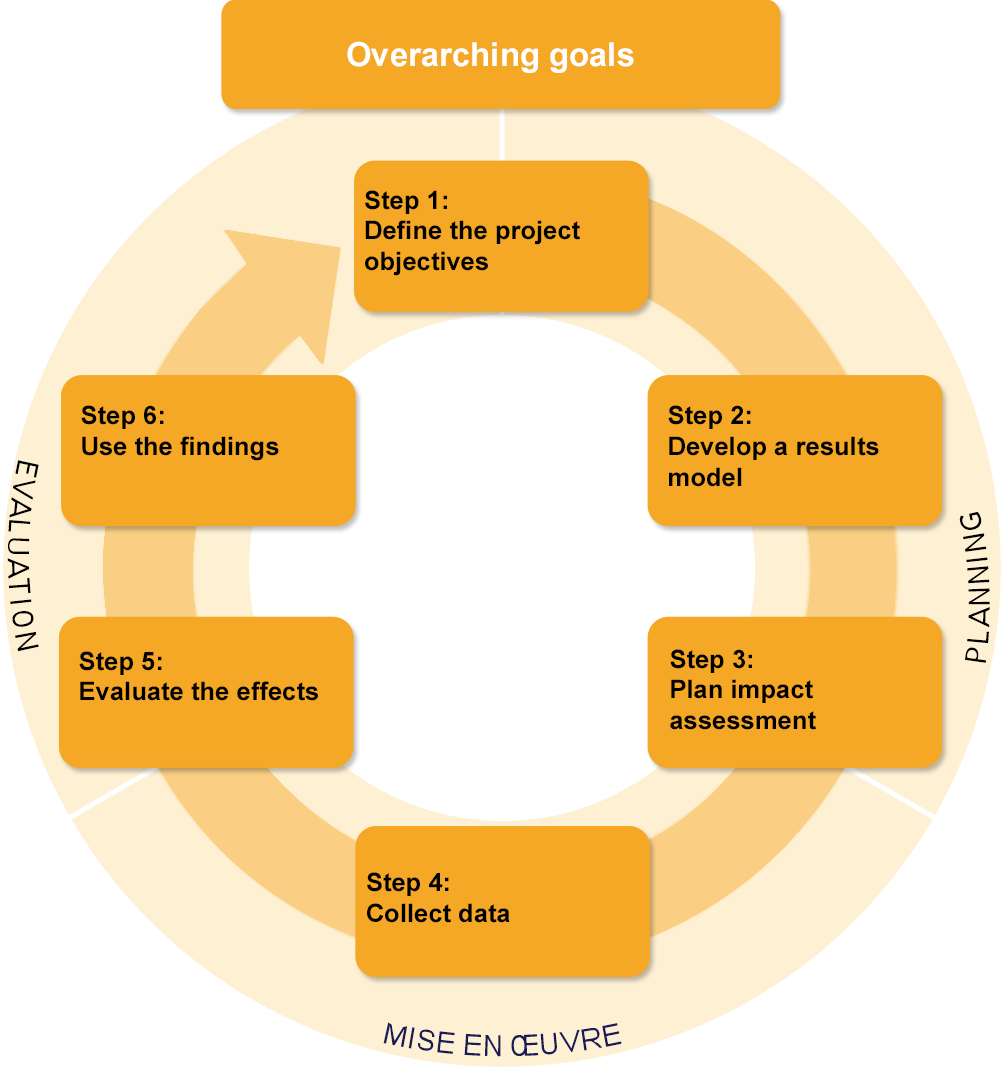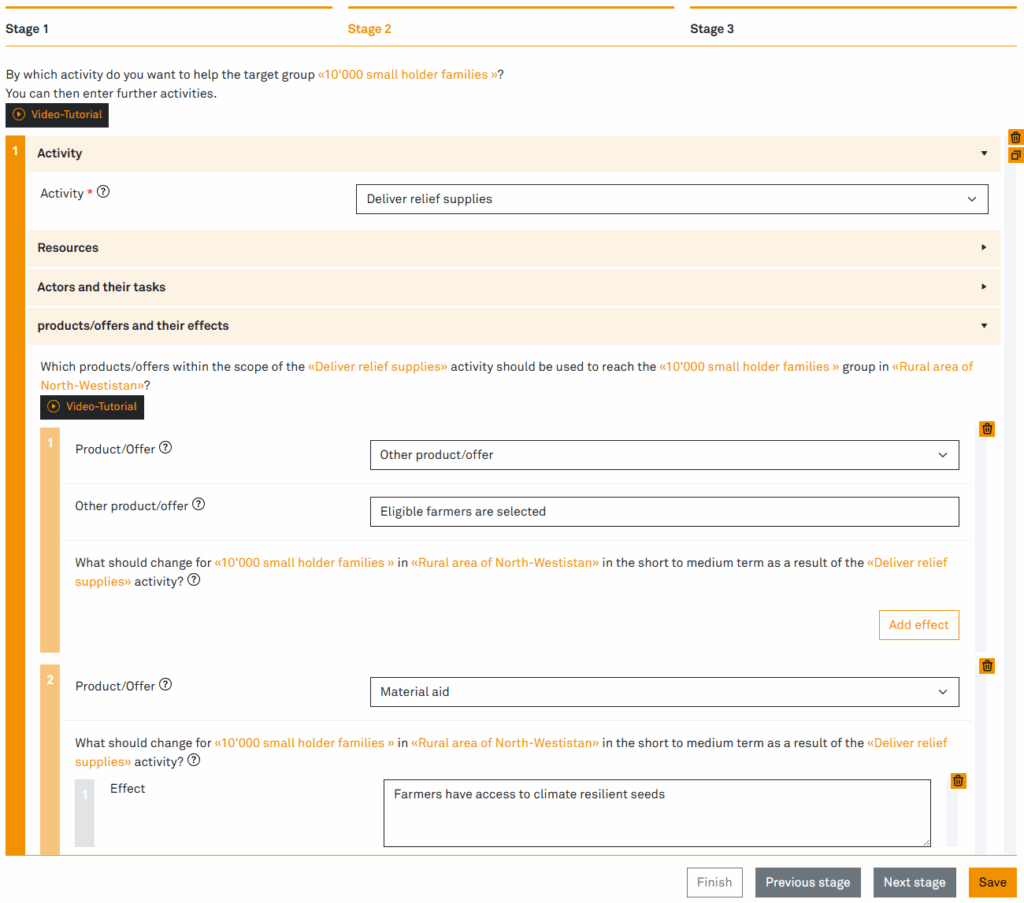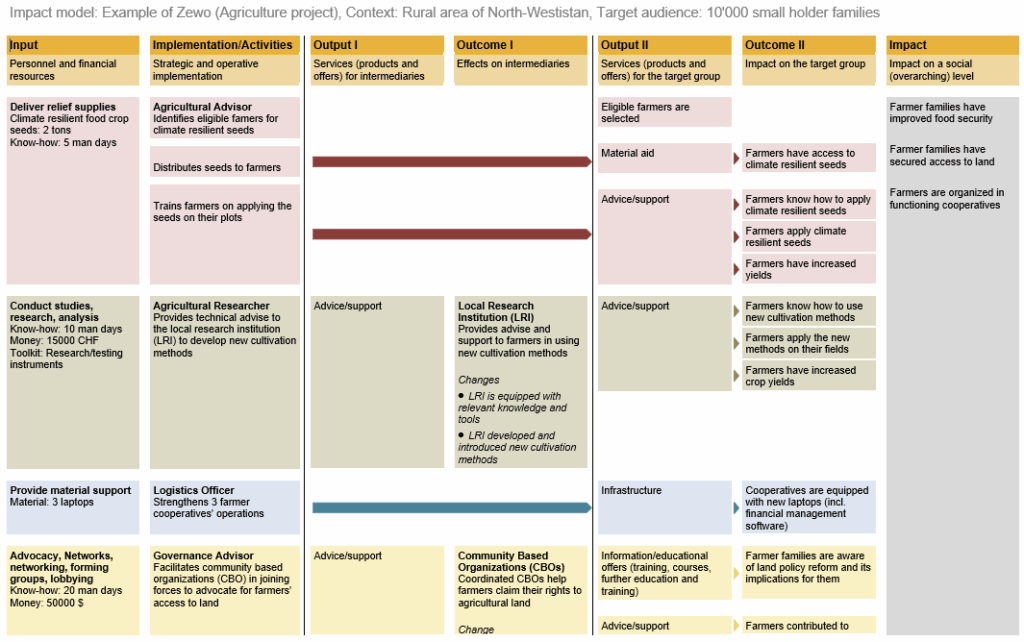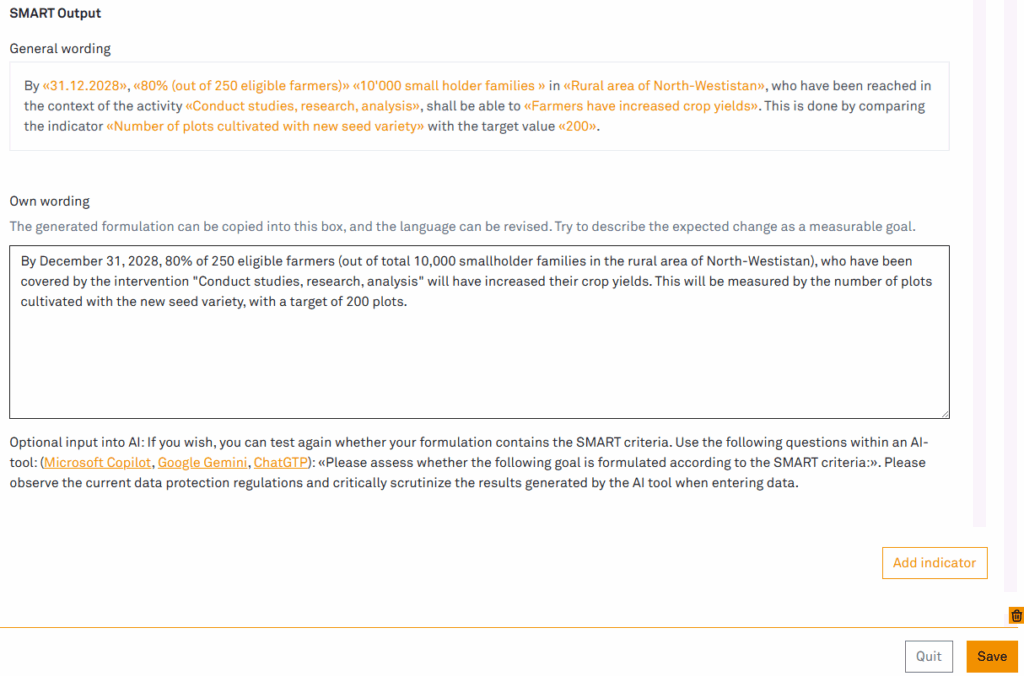Impact-orientation is the key to success
Charities, donors and institutional funders aim to make a difference together for a good cause. Impact-oriented action can be integrated into existing work processes in six steps. The Zewo Impact Tool supports charities in this process.
Towards Impact in 6 steps

Impact-orientation starts with good planning of an intervention. Charities working towards achieving positive results closely monitor the progress of their work. Monitoring data provide the basis for assessing effects and gaining insights for the future.
The Zewo Impact Tool

The Zewo Impact Tool supports charities in developing an impact model in no time, formulating smart goals and tracking the progress of an intervention.
Step 1: Set goals
Through their interventions charities want to improve the situation for their target groups. They are familiar with the context, know the needs and have an idea of what should be changed and for whom. To help, plan activities or have already designed a project or service.
This is how the Zewo Impact Tool supports you:
Guided by practical entry screens, you describe how a specific service or project should help your target group. Your data is protected. It’s your decision who gets access.

Step 2: Develop an impact model
An impact model outlines the intended effects of a particular intervention and how these effects should be brought about. It clarifies what should change and how this shall be achieved. The impact model provides charities with a framework to monitor and evaluate whether their initiatives have been effective and meaningful. It helps them to find out whether the underlying theory of change with its assumptions about causes and effects was designed appropriately.
This is how the Zewo Impact Tool supports you:
Answer a couple of questions to describe what your organization does or plans to do and what effects it hopes to achieve through its activities. The questions develop dynamically. This means that your answers will produce the subsequent questions. Selection menus and examples simplify your entries.

Then create the impact model with just one click. You can add to and refine it at any time. Download the final model to edit it further as a text document.

Step 3: Plan to measure results
But how can charities assess whether their interventions are achieving the intended effects? The answer to this question is key to success. To assess progress, charities must specify their goals and intended effects with measurable indicators. Such indicators should fulfill the following SMART criteria:
- Specific: The indicator must be clear unambiguous.
- Measurable: The indicator must be measurable with reasonable effort.
- Achievable: The target value specified by the indicator must be achievable.
- Relevant: The information provided by the indicator should be relevant to the project.
- Time-bound: The indicator must specify by when the target is to be achieved.
Quelle: European Commission, PCM Guidelines
This is how the Zewo Impact Tool supports you:
The tool asks you the questions to define indicators and measurable effects of your impact model. Based on your answers, it will suggest a wording for a measurable goal. Adjust the wording, if necessary. Then do the SMART check – even it’s just for fun. The AI application of your choice facilitates assessing whether your goal meets the SMART criteria and points out possible improvements.

Step 4: Collect monitoring data
Before implementing a project or activity, charities should know how to collect and record data to monitor progress against intended effects. A good project monitoring plan makes the job a lot easier.
This is how the Zewo Impact Tool supports you:

To do the SMART check, you have already determined the key elements for data collection. For instance, you have defined measurement stages and decided what you want to compare. Now create the practical progress table with just one click. It shows you which data you need to collect and when.
Step 5: Assess the effects
To assess the intended effects the collected data needs to be analyzed. If an organization has set up several measurement stages, it can systematically monitor whether it is on track. If necessary, it can initiate steering measures to adjust project implementation at an early point in time. The option to compare the target group with a reference group facilitates critical reflection on possible alternative factors explaining the measured effects.
This is how the Zewo Impact Tool supports you:

Download the progress table as a Word file and fill in the measured values. Assess your activities by comparing the actual values with the planned values. Are there significant deviations? If so, initiate steering measures and write them down in the corresponding field in the table. This way, you report on the effects and you show that your organization is pursuing an adaptive approach.
Step 6: Use monitoring findings
Acting effectively means more than just collecting and measuring data. It is also about interpreting the data and drawing conclusions. Monitoring not only helps to assess progress towards planned effects, track deviations and find possible causes. It also serves to critically reflect on the design of an intervention and the impact model with its assumptions about cause and effect as well as to review the project implementation. It’s about learning, drawing lessons learnt and making adjustments for the future: What needs to be modified or replaced? Which resources can be shifted or reallocated? The insights gained from monitoring can also be used to inform the planning of the next phase or future interventions. Relevant monitoring findings facilitate context analysis, stakeholder mapping and problem analysis.
This is how the Zewo Impact Tool supports you:
Include the completed progress table in your report. On this basis, describe the findigns in the narrative section of the report and explain the steering decisions as well as their effects on the further course of the intervention. This way you make the most of your progress table ensuring that both your intervention and your report are impact-oriented,
Start the Zewo Impact Tool now
Infobox Zewo Impact Tool (ZIT) – everything at a glance:
| Light version: free for all 1 user, 1 impact analysis, 1 activity, export of impact model Full version: free for organizations with Zewo quality seal, 180 CHF/year for all others 5 activities per impact analysis, unlimited number of impact analyses, impact analysis can be shared within and outside the organization, export of impact model and progress table Languages: German, French, English Registration: https://impact.zewo.ch/app/dashboard/#reg_membership Further information on impact and ZIT: German | French | English |

